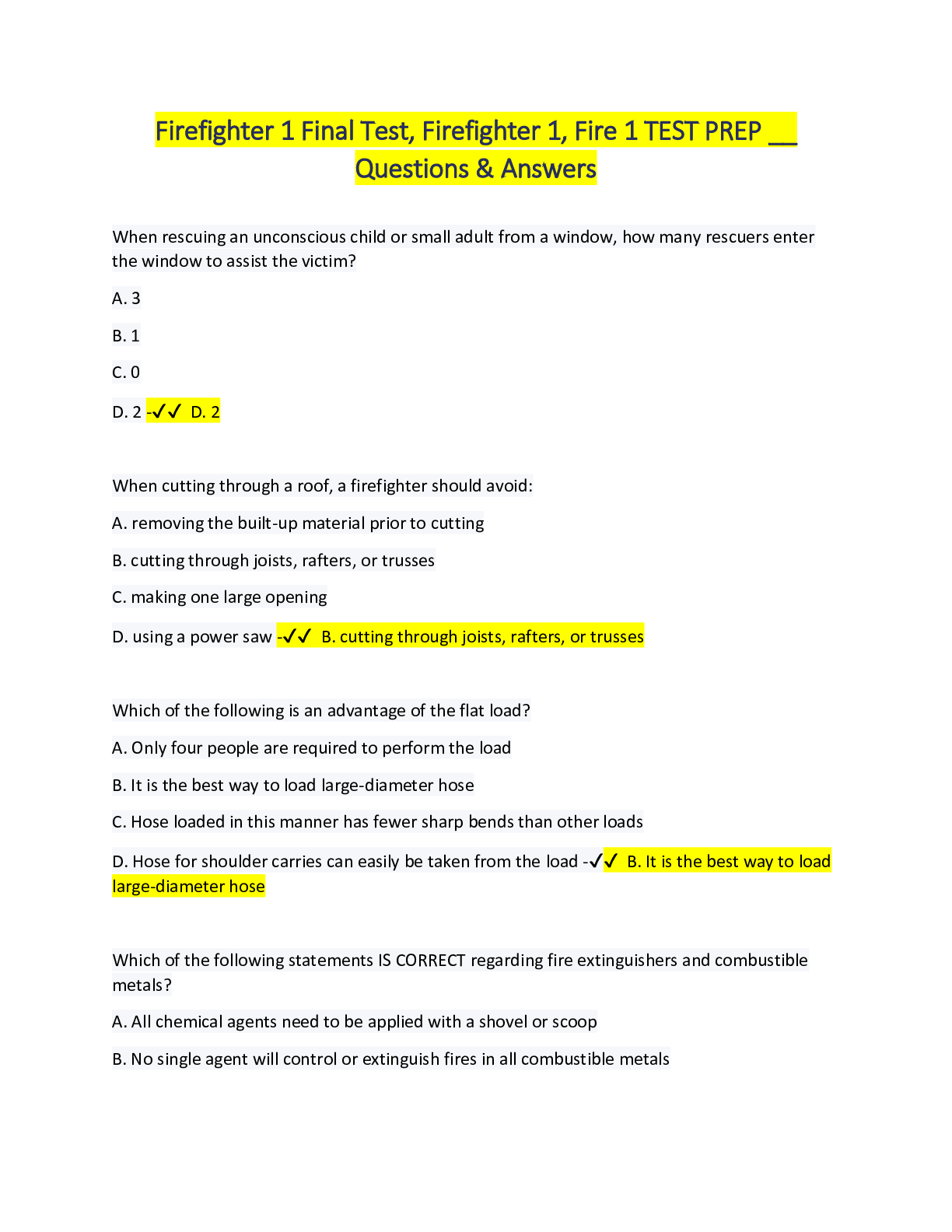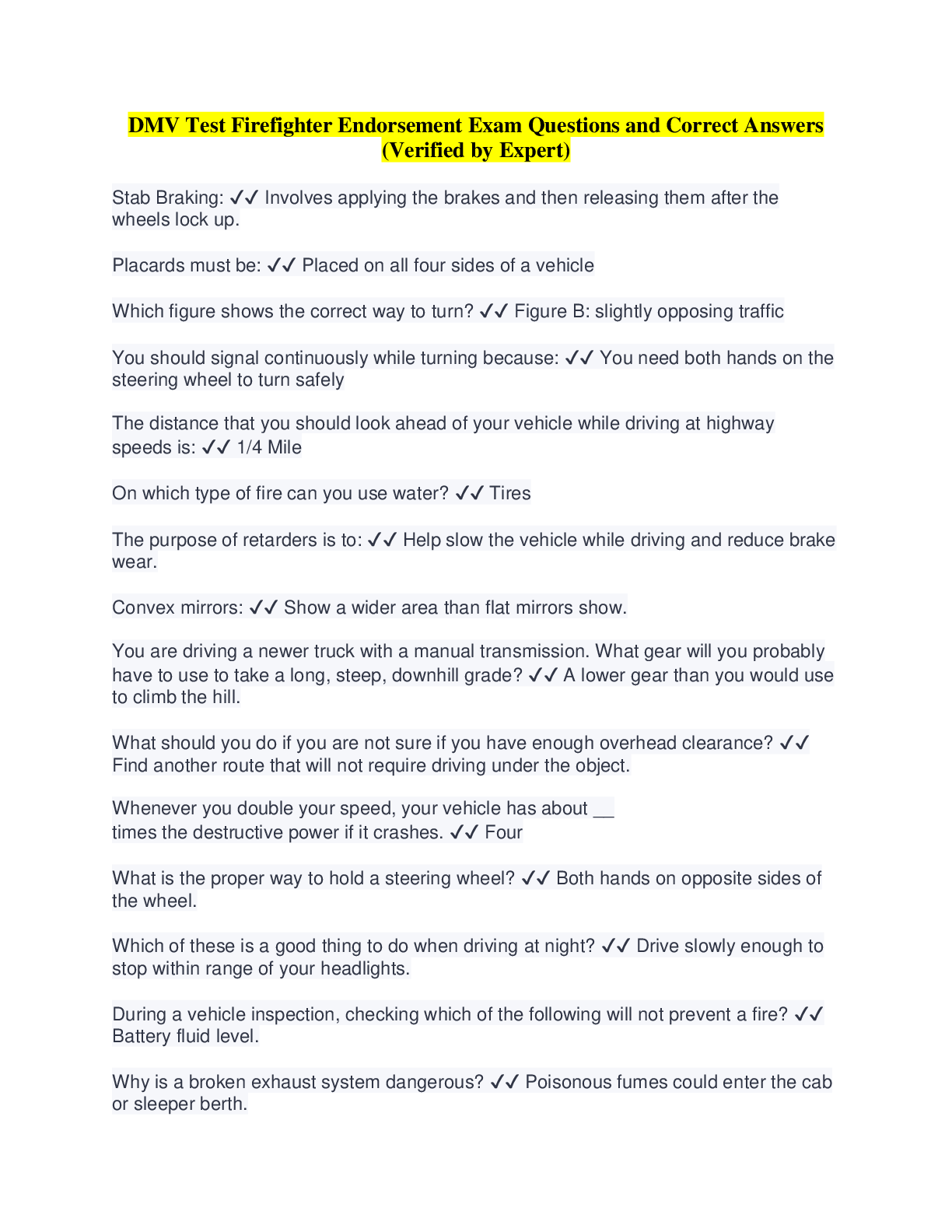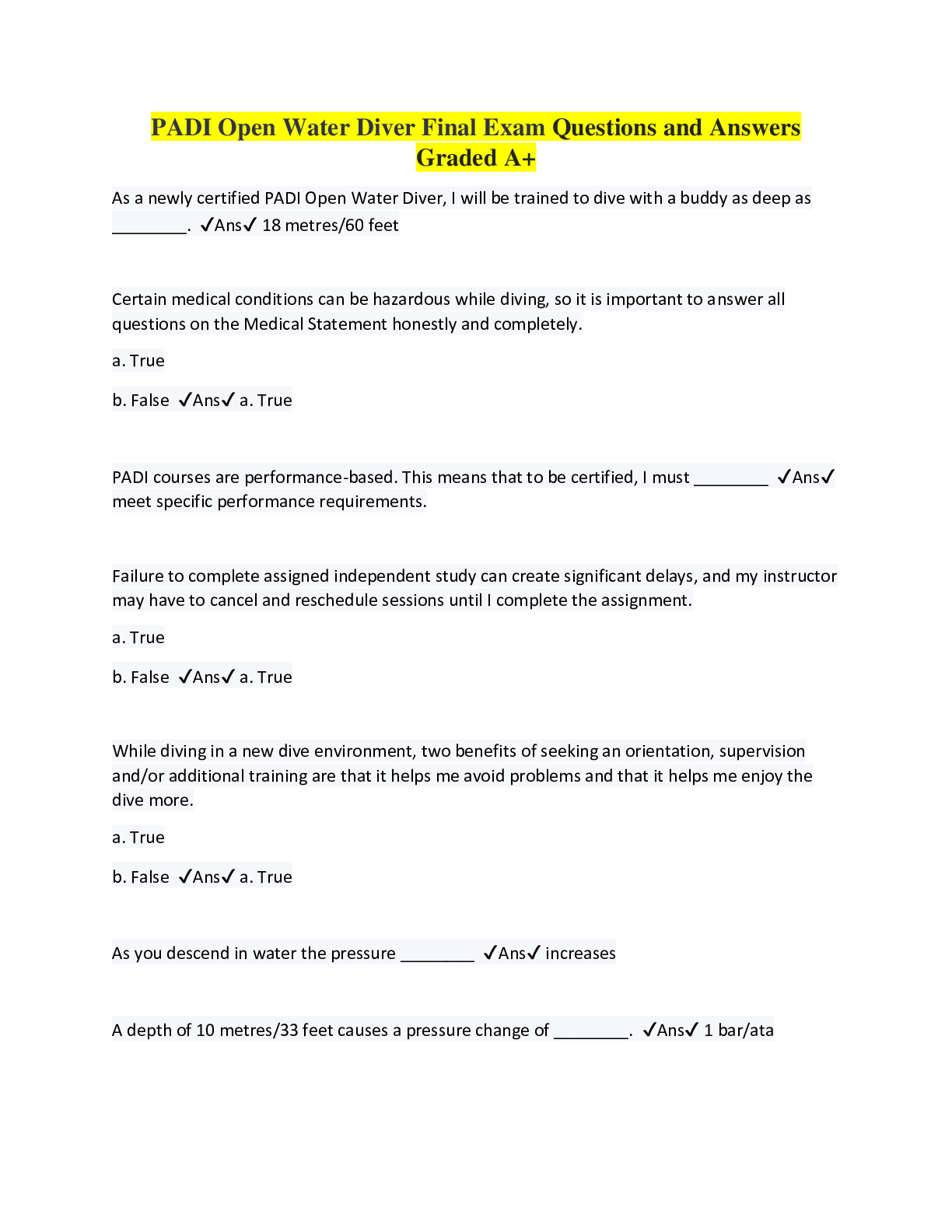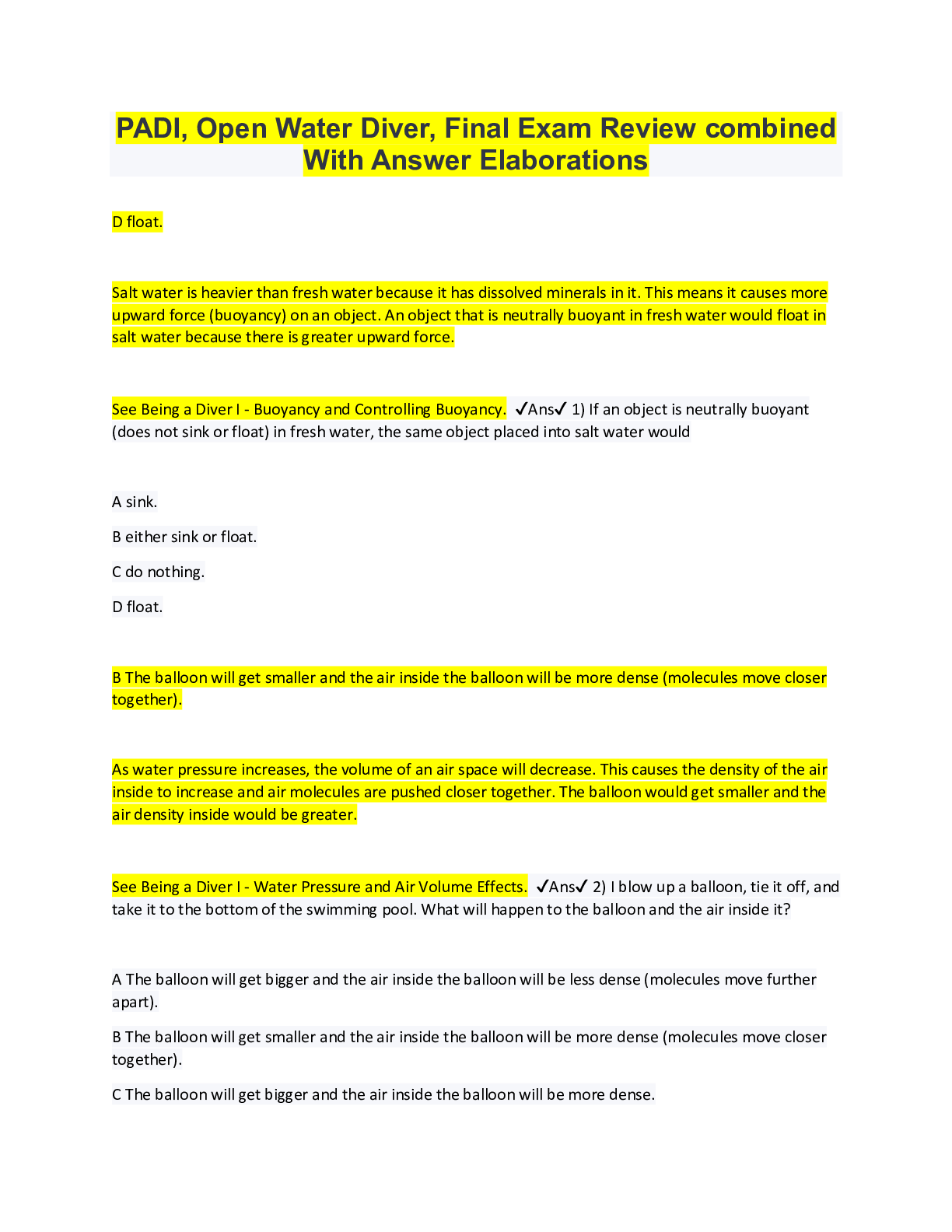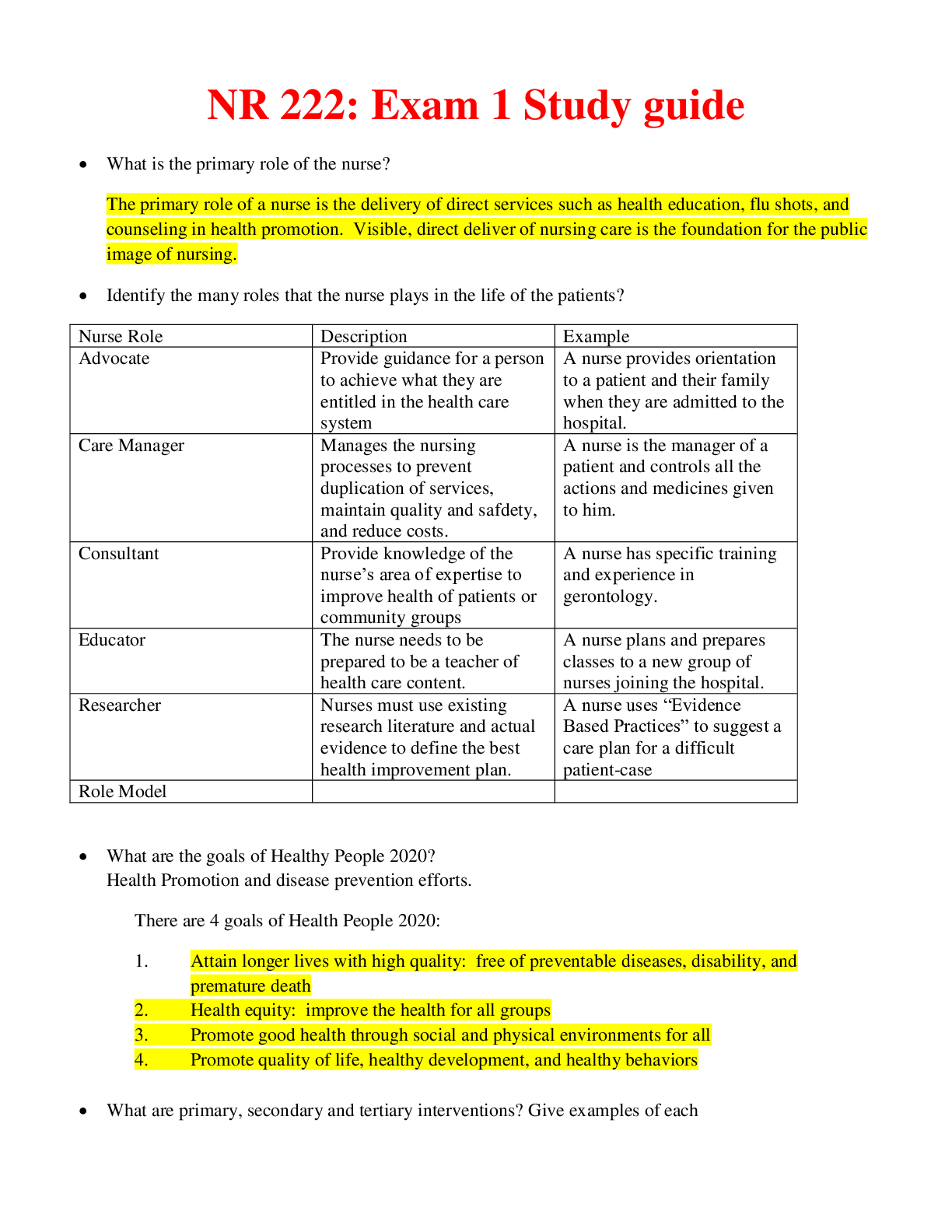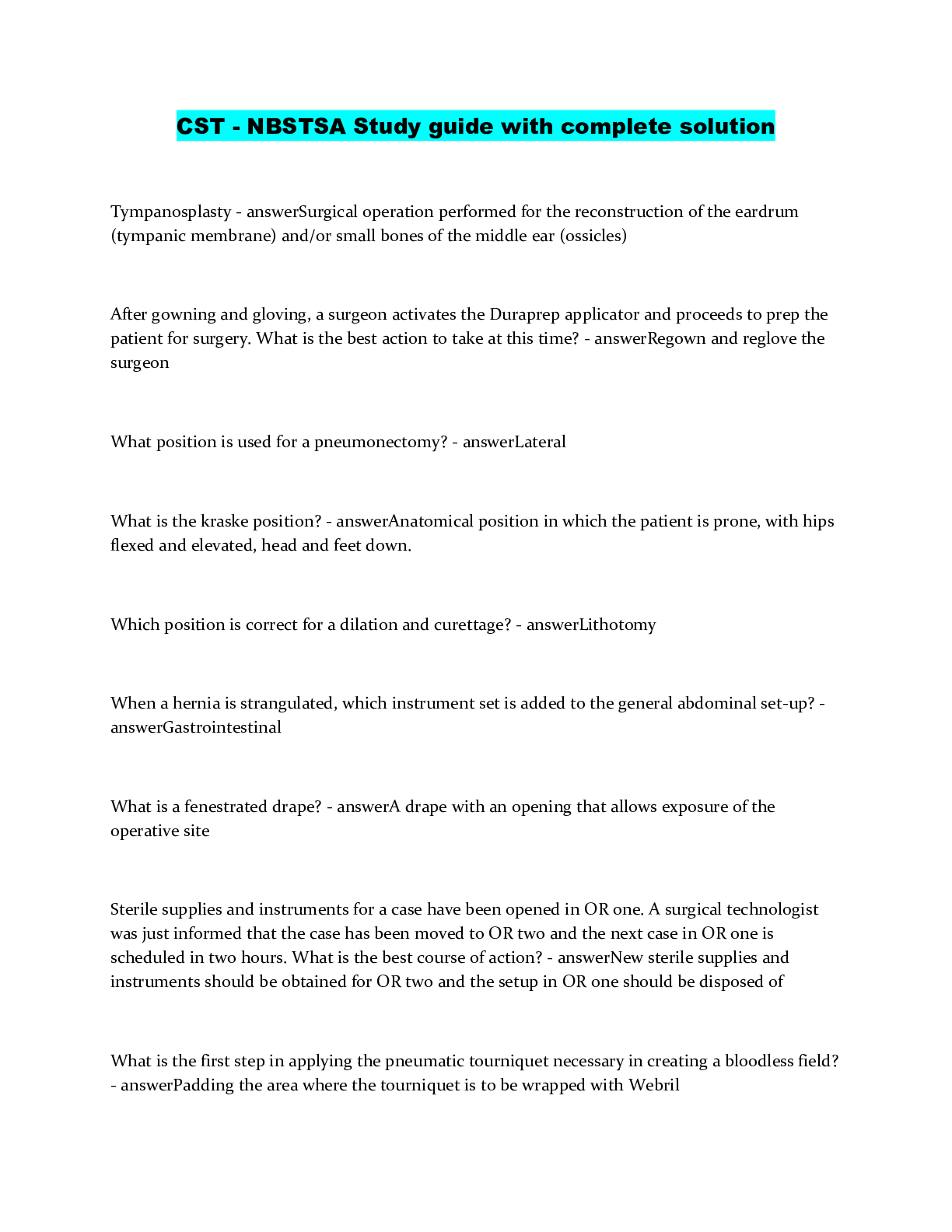Business Law > QUESTIONS & ANSWERS > NES Test Special Education Study Guide with complete solution Graded A+ (All)
NES Test Special Education Study Guide with complete solution Graded A+
Document Content and Description Below
NES Test Special Education Study Guide with complete solution Graded A+ Competency 1 -✔✔ Focuses on the characteristics of typical and atypical human growth and development and the characteris... tics of students with various disabilities that special education teachers are likely to encounter. Learning Disabilities -✔✔ Students with learning disabilities have average or above average intelligence but an unexpected academic weakness in one or more content areas. Dyslexia -✔✔ Impacts a student's ability to learn to read, to recognize sound segments or letters, following along in text comprehending what they read. Dysgraphia -✔✔ Impacts student's ability to learn to write, often their handwriting and/or spelling. Dyscalculia -✔✔ Impacts a student's ability to understand numbers and mathematical operations, remembering math facts and the sequence of steps in math problems. Intellectual Disabilities -✔✔ Students qualify as having an intellectual disability when they show developmental delays in most aspects of academic and social functioning. Communication Disorders -✔✔ Students who are more likely to mispronounce sounds or have speech that lacks fluency are identified as having speech disorder. Articulation Disorders -✔✔ Affects a student's ability to produce certain sounds and sound combinations. Fluency Disorders -✔✔ Hesitations or stuttering Specific language Impairment -✔✔ Manifests as a delay in a student's language development but the student shows no other conditions that would cause such a delay in language development (e.g., autism, deafness) Emotional Impairments -✔✔ Typically, children who are identified as having emotional impairments show behaviors or emotions that are not appropriate for setting. Often they have trouble making friends, working in groups, and maintaining personal relationships. Anxiety Disorders -✔✔ Characterized by excessive fears or worry. Phobias, separation anxiety, and obsessive-compulsive disorder. Mood Disorders -✔✔ Including depression and bipolar disorder (i.e., swings between elevated or manic mood and depression). Students who are depressed may cry often, lose motivation for things that were once enjoyable, lose weight and disregard hygiene, or have suicidal thoughts. Oppositional Defiant Disorder -✔✔ Students show hostile and defiant behaviors, including temper tantrums, arguments, and irritability. Conduct Disorders -✔✔ Students consistently engage in antisocial behaviors that interfere with others. Attention Disorders -✔✔ Students with attention deficit/hyperactivity disorder (ADHD) are more easily distracted and divide their attention between multiple stimuli instead of staying on task when compared to others at the same developmental level. Autism Spectrum Disorders (ASD) -✔✔ Range from mile to severe based on the degree to which they show characteristics. Atypical Language Development and Communication Delays -✔✔ Many never learn to communicate successfully using spoken language. Some engage in echolalia, repeating pars of a sentence they just hear. Many show limited eye contact or extreme focus or interest in one topic or conversation. Students with ASD often have difficulty understanding figurative language and humor. Atypical Social Development -✔✔ Students with autism do not seem to recognize or respond to others' emotions, social cues, and nonverbal signals. Many do not interact with others during play and/or do not engage in reciprocal interactions. Repetitive Behavior, Including Movement and Verbalizations -✔✔ Tics (physical) and obsessions (attention) are common. Undesirable Behaviors -✔✔ Some children with autism are aggressive toward others or engage in repetitive self-injurious behaviors. Need for Predictability -✔✔ Many students with autism gain security from environmental structure and experience anxiety in unfamiliar situations. Some focus intensely on adherence to routines and become upset if things are out of place or sequence. Sensory and Movement Disorders -✔✔ Some children are over-responsive to sensory stimuli, whereas others are under-responsive, some show atypical movement of the head, trunk, and limbs; clumsiness or posture; or an awkward (i.e., not smooth) gait. Intellectual Disabilties -✔✔ Although students with autism spectrum disorders may have very high intelligence or low intelligence, more than half also have an intellectual disability. Sensory Disorders -✔✔ Hearing and visual impairments are the two most common sensory disorders that special education teachers encounter. Hearing Loss -✔✔ Students who are deaf or hard of hearing often experience language delays, particularly if their hearing loss goes undetected. Visual Impairments -✔✔ Individuals are considered totally blind if they cannot receive any meaningful visual input. They rely on input from other senses. Physical Disabilities and Health Impairments -✔✔ May be caused by congenital anomaly, disease, or injury such as fractures, burns, or loss of a limb. Cerebral Palsy -✔✔ Disorder of voluntary movement and posture. The majority of students with cerebral palsy show spastic movement, although others may be more likely to display uncoordinated or abrupt involuntary movements. Some students with cerebral palsy also experience seizures. Many have sensory (i.e., hearing or vision) and/or language impairments as well. Spina Bifida -✔✔ Congenital malformation of the spinal cord or vertebrae. Students with the mildest form (occulta) or more serious form known as meningocele do not show challenges with movement, but students with mylomeningocle form typically have leg weakness and are unable to control their bowels or bladder. Does not affect intelligence. Epilepsy -✔✔ A condition in which individuals experience seizures, caused by abnormal electrical discharges in the brain. In the most severe cases the individual experiences uncontrollable jerking, stops breathing, and loses consciousness. During partial seizures, which are more common, the individual is more likely to experience an altered state of consciousness and some alteration in movement (e.g., twitching). Asthma -✔✔ Chronic lung condition characterized by episodic bouts of wheezing, coughing, difficulty breathing. AIDS -✔✔ Acquired immune deficiency syndrome. Students cannot resist or fight off infections. Cystic Fibrosis -✔✔ A genetic disease in which the body's exocrine glands excrete thick mucus that can block lungs and parts of digestive system. [Show More]
Last updated: 2 years ago
Preview 1 out of 51 pages
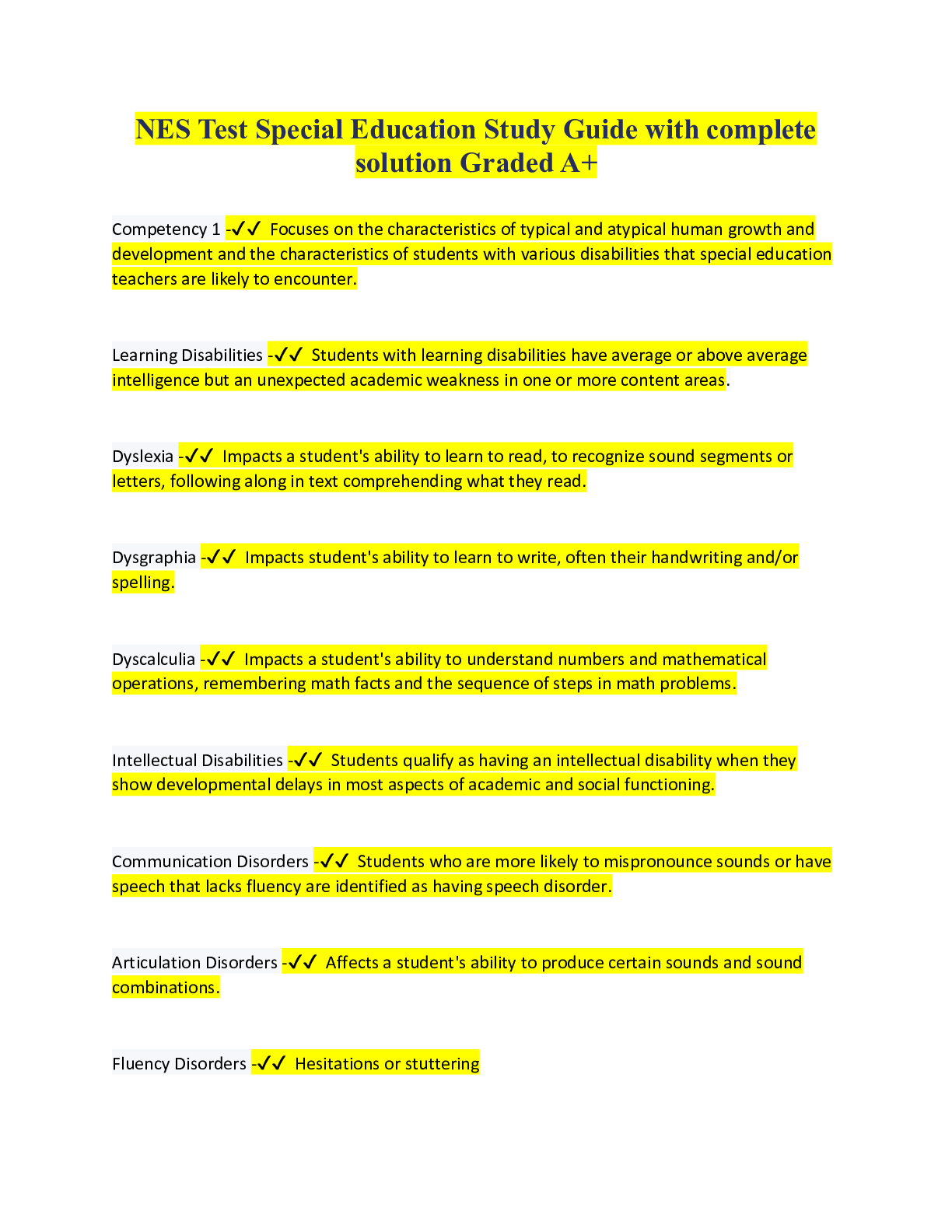
Buy this document to get the full access instantly
Instant Download Access after purchase
Buy NowInstant download
We Accept:

Reviews( 0 )
$11.00
Can't find what you want? Try our AI powered Search
Document information
Connected school, study & course
About the document
Uploaded On
May 18, 2023
Number of pages
51
Written in
Additional information
This document has been written for:
Uploaded
May 18, 2023
Downloads
0
Views
213



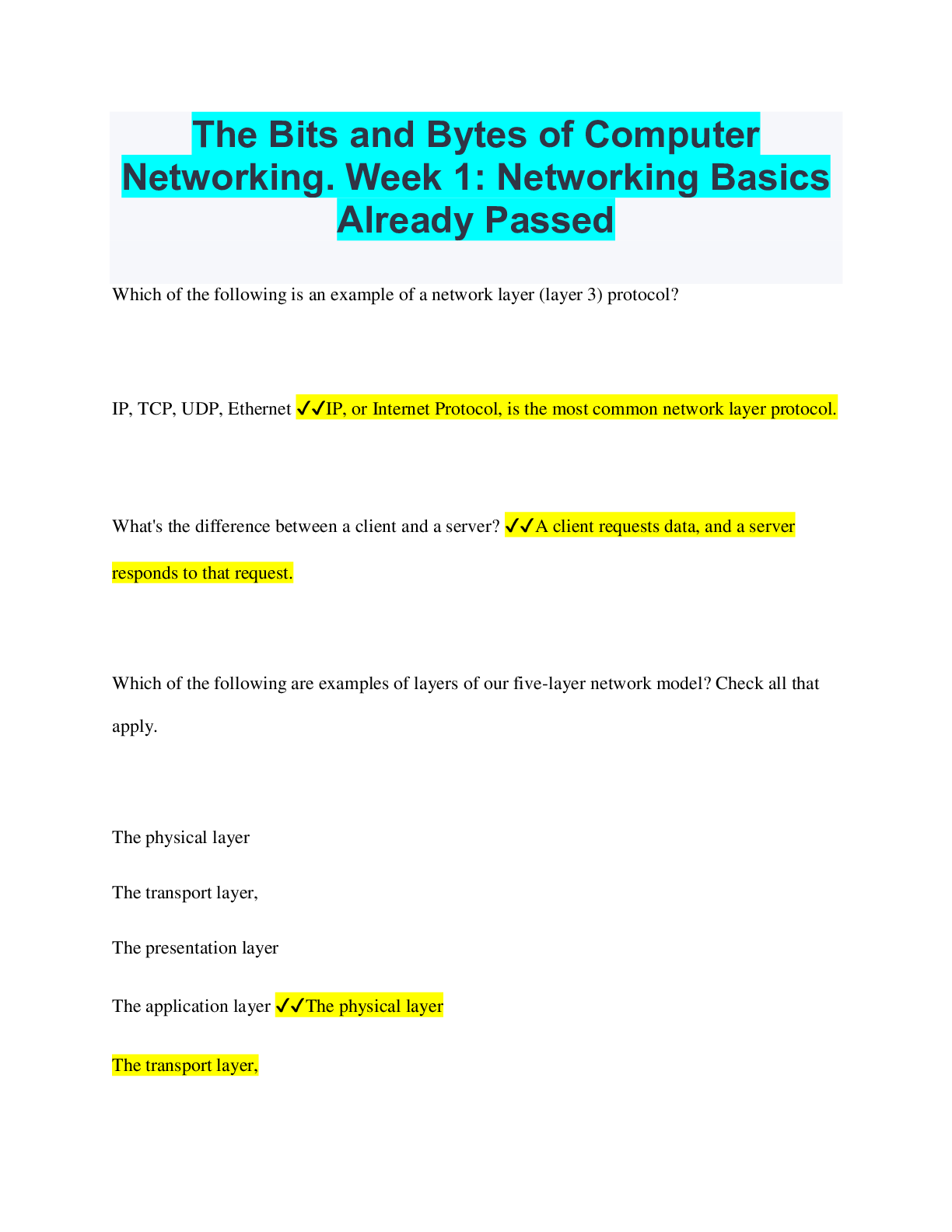
 Answered 2023.png)


